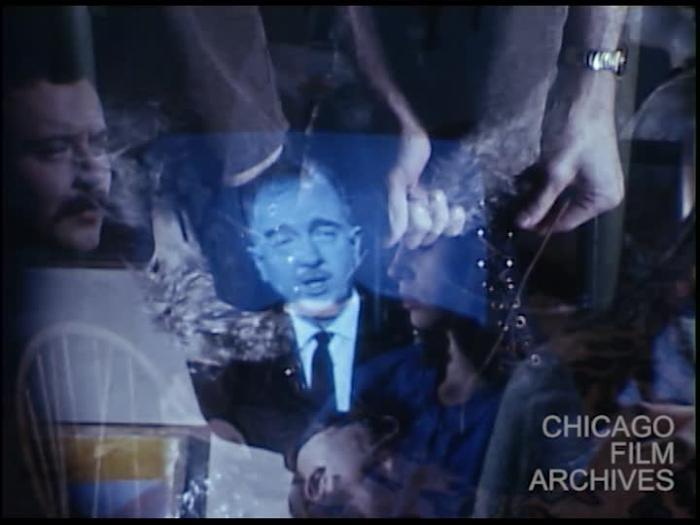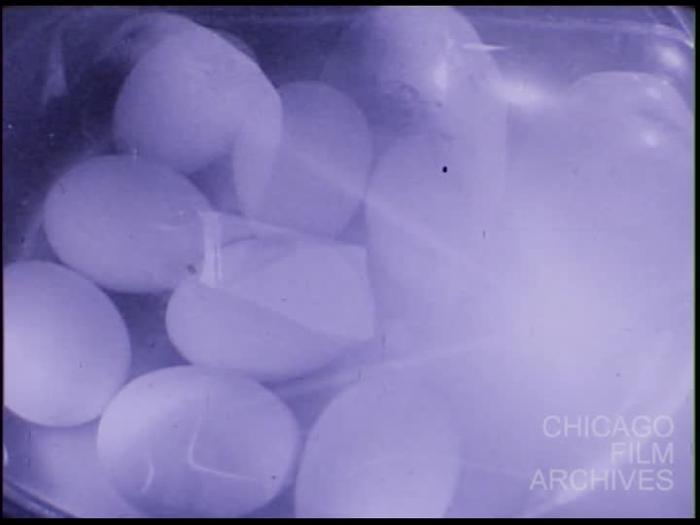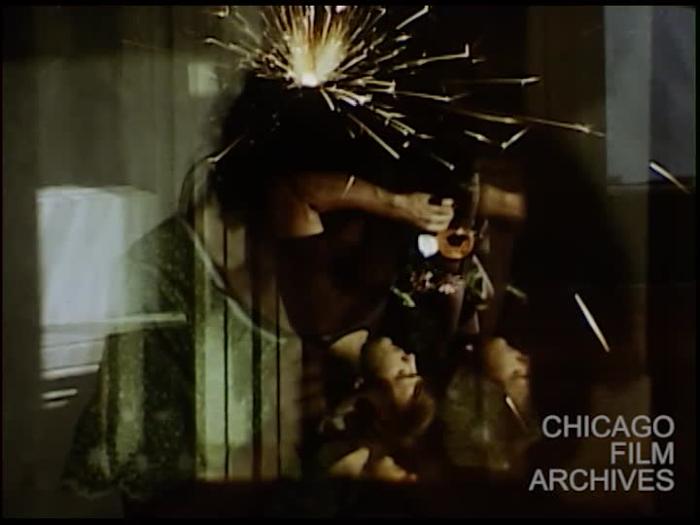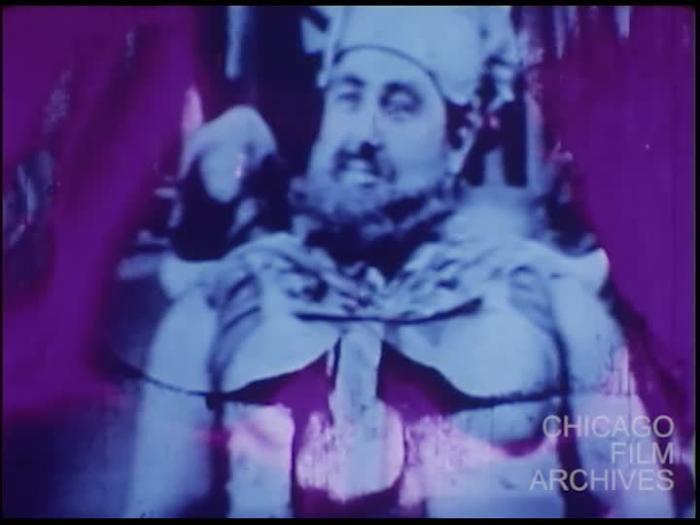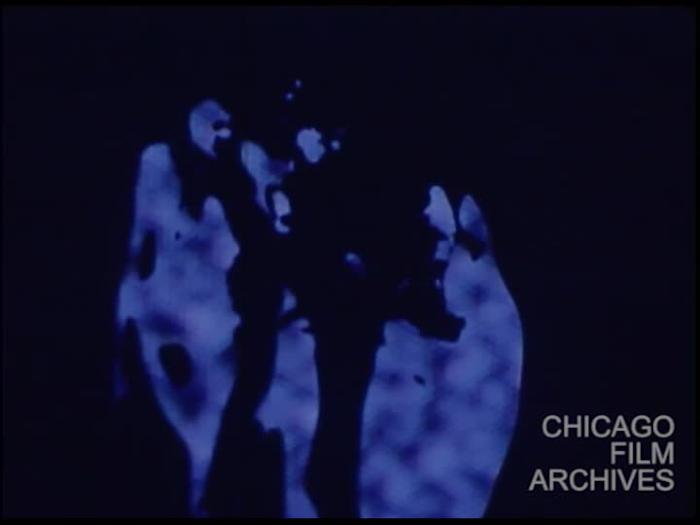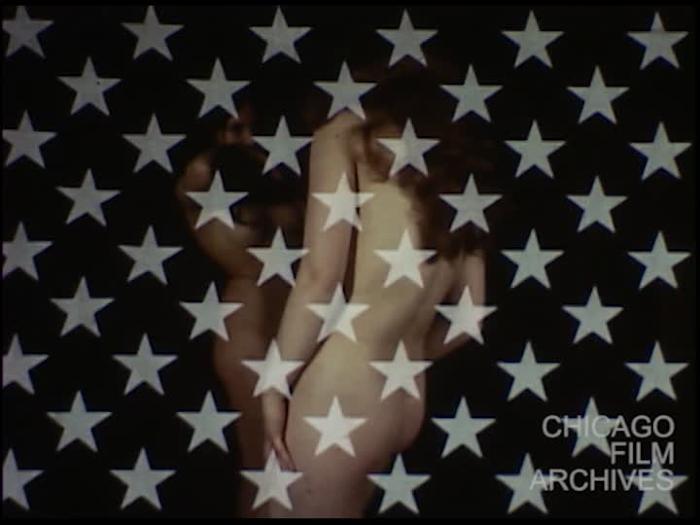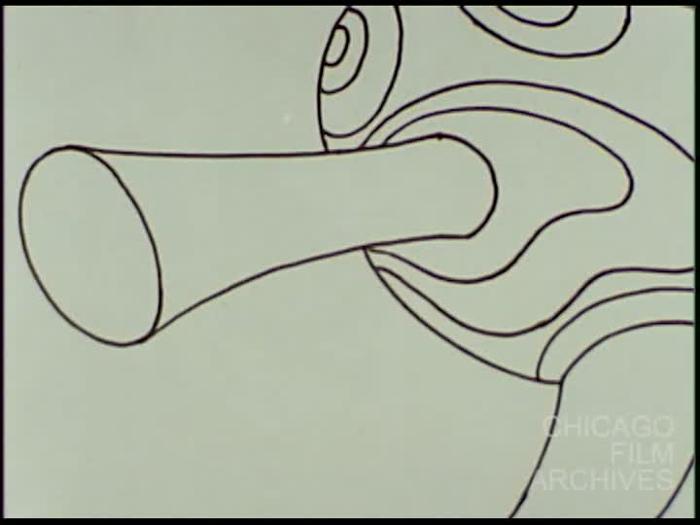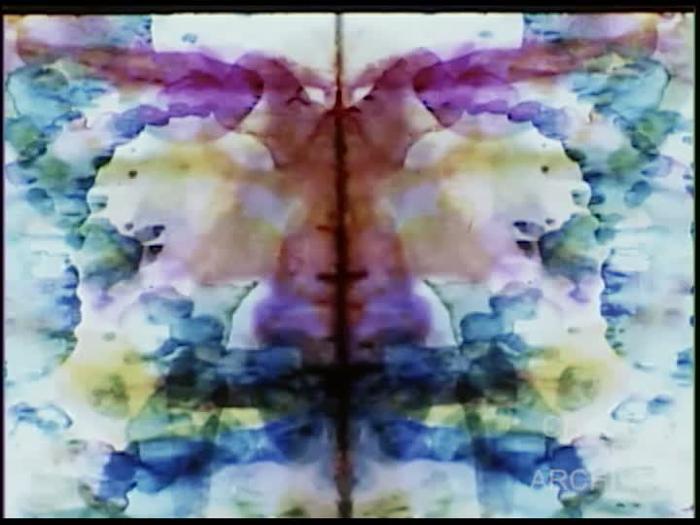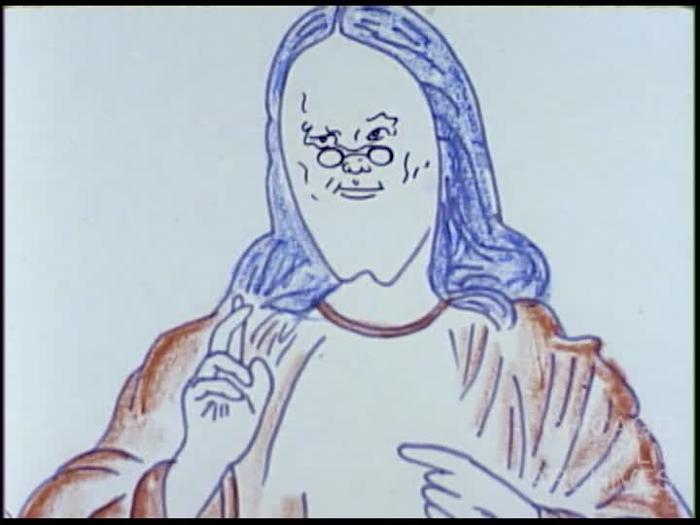Byron Grush Collection
Inclusive Dates
1961 – 1992
Bulk Dates
1961 – 1976
Abstract
The Byron Grush Collection contains experimental and animation films made by Chicago filmmaker and animator, Byron Grush. Byron has ties to numerous local universities and organizations including the School of the Art Institute of Chicago, Chicago Academy of Fine Art, Goldsholl Design Associates, and Center Cinema Coop. This collection’s experimental films consist of hand drawn animated works and abstract short films, made primarily between the years 1961 and 1976. Films by other local filmmakers and artists are included in this collection. Also found in this collection are: an original drawing from Byron's film Why We Fight, a signed copy of The Shoestring Animator, newspaper clippings of Byron’s work, and other ephemera.
Collection Items
Film
Hesper and Phosphor Part 2
circa 1967
Film
Les Preludes
1973
Film
Push You Pull Me
1967
Film
The Lecture
circa 1966
Film
To Joy
1992
Film
Phosphene
1971
Film
Festival of Cyclists
1971
Film
Hexagrams
1966
Film
Why We Fight
1991
Film
Inkaboos
circa 1967
Film
Fotogrammar
circa 1969
Film
Circles
circa 1965
Film
Lonely
circa 1971
Film
Flesh Colored Crayons
1992
Paper or Photographic Materials
Center Cinema Co-op Illinois Filmmakers Speakers Bureau: a catalogue of filmmakers
To request more information about the items in this collection, please contact the archive at
info@chicagofilmarchives.org.
Items with Viewable Media
- Center Cinema Co-op Illinois Filmmakers Speakers Bureau: a catalogue of filmmakers (Paper or Photographic Materials)
- Circles
- Face One
- Festival of Cyclists
- Filet of Soul
- Flesh Colored Crayons
- Fotogrammar
- Head
- Hesper and Phosphor part 1
- Hesper and Phosphor Part 2
- Hexagrams
- Inkaboos
- The Lecture
- Les Preludes
- Lonely
- Phosphene
- Push You Pull Me
- Rapid Eye Movement
- To Joy
- Twitchy/Cosmic Ray
- A Viewmaster for Mary
- Why We Fight
Collection Identifier
C.2016-04
Extent of Collection
99 reels of 16mm film totaling approximately 30,675 feet; 2 reels of 8mm film totaling approximately 300 ft; 1 reel of 35mm totaling approximately 400 feet; 4 U-matic cassettes
Language Of Materials
English
Custodial History
Items in this collection were previously stored by Byron Grush. On April 9, 2016, Byron donated his films and other ephemera to CFA.
Related Materials
CFA's Mort & Millie Goldsholl Collection contains Worth How Many Worlds and Up is Down, along with other films that Byron worked on while he was employed at Goldsholl Design & Film Associates.
Access Restrictions
This collection is open to on-site access. Appointments must be made with Chicago Film Archives. Due to the fragile nature of the films, only video copies will be provided for on-site viewing.
Use Restrictions
Chicago Film Archives holds the copyright for the films made by Byron Grush. For the films created by others, any determination of copyright status for reproduction is the responsibility of the user.
Creators
Grush, Byron
(was created by)
Filmmaker and animator Byron Grush was born in Naperville, Illinois, in 1943. As a child, he attended marathon cartoon shows (also known as Junior Joy Shows) at his local movie theatre. However, it wasn’t until the 1950s, when Byron borrowed his father’s Kodak Brownie 8mm camera that he began to experiment with film himself. Upon receiving his very own still camera as a birthday present, he taught himself photography. While in high school from 1957 through 1961, Byron was the unofficial Naperville High School student newspaper photographer.
From 1961 to 1965, Byron attended the School of Art at the University of Illinois at Champaign-Urbana. During this time, Byron and his roommate, Louis Desio, made a film with a 8mm camera. The film, Sojarf, was well accepted by students and teachers. Byron went on to receive a Bachelor of Fine Arts in Graphic Design.
In the mid-1960s, Byron applied to the School of the Art Institute of Chicago (SAIC) for a graduate degree. He felt that his portfolio was weak and uninspiring. Realizing he wasn’t going to be accepted, he showed Sojarf. Even though there were no filmmaking courses at the time, Byron was admitted. Roger Gilmore, SAIC’s director, wanted to offer film courses at the school, so he received a film grant for Byron and at most two other students. Byron was instructed to shoot around visual themes and the results include the films Textures and Circles. The next film Byron created was The Lecture.
While attending SAIC, Byron registered for an art history class in Surrealism, taught by legendary teacher, Whitney Halstead. For his final class project, Byron made the film, Hexagrams. In 1966, Byron married the love of his live, Martha Glennon, who appeared in many of his films. The couple moved to Waukegan and later Wilmette. Also around this time at SAIC, Byron created the first part of the film Hesper and Phosphor.
Roger Gilmore’s “experiment” with the film student grant was deemed a success. The students involved in this project, including Byron, were essentially the founders of the film department at SAIC. The school hired Gregory Markopoulos to teach film. Gregory introduced Byron to the works of filmmakers in the New American Cinema movement, which included his own work. Gregory’s films opened new possibilities for Byron and his influence can be seen in the films The Lecture and Hesper and Phosphor Part 2.
Gregory had been given little in support for space or equipment to teach. Undaunted, he arranged to have 16mm cameras donated for his class. Also, Gregory wrote to the curator of the Belgian Royal Film Archive to arrange for student grants. Byron received 1,000 feet of reversal 16mm film. For this project, he created Push You Pull Me. The completed student films were screened at the 4th Belgian International Film Festival.
Byron’s only film professor up to that point, Gregory, left SAIC prior to the end of the term. His departure opened a teaching position at the school. Byron finished his studies and received the very first Masters in Fine Arts given in Filmmaking by SAIC. As the school searched for a professor, Byron, interested in the position, approached a member of the search committee and was told, “Go away and become famous…then come back and we’ll talk.”
After graduation, Byron continued making films. In 1967, he received commission to make a film for a private party. The result of this project is the film Happenstance. Between 1967 and 1969, Byron was looking for work and came across an article about design company, Goldsholl Design Associates. The experimental aspects of its commercial films were primarily the work of two individuals, Wayne Boyer and Larry Janiak. Byron applied to Goldsholl, showed Hexagrams and was hired. While at Goldsholl’s, Byron filmed product shots and worked on several industrial films, including Worth How Many Worlds for Eastman Kodak. He also animated the electrocution sequence in Millie Goldsholl’s film Up is Down.
During this period, Byron collected images and experimented with abstractions, which resulted in the films Fotogrammar and Inkaboos. Also, Byron was fascinated with the degenerated images in old film footage and for his next project; he obtained clips from pornographic film made crudely in 8mm. This resulted in his next film, Phosphene. Due to its erotic imagery, the film was nearly rejected at the Ann Arbor Film Festival.
In 1969, Byron left Goldsholl’s and began working at Douglas Film Industries, a motion picture film laboratory in Chicago. He also wrote science fiction stories. While working at Douglas, Byron experimented with copies to exaggerate color contrasts. Byron’s films, Fotogrammar, Phosphene and Festival of Cyclists were all screened at the Ann Arbor Film Festival in 1970, 1971, and 1972, respectively.
For his next project, Byron and John Craig, a friend and former fellow student at SAIC, began to collect 16mm prints of 1930s cartoons. Parties were held in which there were marathon screenings of the films, which reminded Byron of the Junior Joy shows from his childhood. At one of these parties Byron became interested in attempting character animation.
During the 1970s, Byron joined the board of directors of Center Cinema Coop. He designed a catalog for The Coop Speakers’ Bureau and participated in film screenings with local filmmakers including Larry Janiak, Wayne Boyer, Tom Palazzolo, Peter Weiner, Steve Bezark, and others. Around 1973, a teaching position in filmmaking opened up at the Chicago Academy of Fine Art. Byron left Douglas Film Industries and was hired to teach film, film history, and animation. Byron (true to the tradition of film-as-art) screened underground films in class, some of which displayed nudity. The director strongly opposed this and did not renew Byron’s contract.
Byron continued making films and finalized his next project, Les Preludes, his first musical. Later on, Byron obtained work at Allied Film Lab on West Belmont, becoming the single employee in the 16mm department. In 1974, a teaching position opened up at SAIC. At a public performance of Les Preludes Byron met John Luther, head of the film department, who hired Byron for the teaching position. Two of Byron’s students went on to win Student Academy Awards.
Byron finished his first hand-drawn animation film, Hand and Bodie Transformations in 1976. It was awarded second prize at the 15th Ann Arbor Film Festival in 1977. In the 1980s, Byron and his brother, James, opened a bicycle and sporting goods store in a warehouse owned by their father in Naperville. Byron bought an Apple II computer for bookkeeping and added a graphics tablet for artwork. He taught himself how to program. Byron went on to propose and teach a course in computer animation, the very first offered at SAIC.
Byron wrote The Shoestring Animator a nonfiction book on hand-drawn animation techniques in 1981. It has since been used in animation courses. In 1984, with the death of his father, the bank sold the warehouse building which lead to the closure of the sporting goods store. In the same year, Byron completed Cross Hatch Draw the Latch.
In 1985, Byron entered the world of full-time tenure track university teaching in the Electronic Media area at the School of Art of Northern Illinois University (NIU). During this time, the Internet was fairly new, yet Byron used it to collaborate with artists worldwide. In 1991, Byron completed the animation film, Scissors Paper Stone. Next he created Why We Fight, in response to televised images of the first Gulf War. This film was shown at the 29th Ann Arbor Film Festival and was featured in a video compilation titled Best of the Fests, 1991. In 1992, Byron completed several films including Flesh Colored Crayons and To Joy. That same year, he received a filmmaker’s grant of $5,000 from the Illinois Arts Council in recognition of his work.
During the early 1990s, Byron contributed textual computer graphics to an electronic opera and produced interactive installations for the annual conference of Special Interest Group on Computer Graphics and Interactive Techniques (SIGGRAPH). Also, Byron contributed images to Mary Beams, an animator, for an electronic media-based collaboration at the show entitled, Digital Quilt.
In the mid-1990s, Byron became a founding member of the Midwest USA Chapter of the International Animated Film Association (ASIFA). He was the web master and wrote articles for the chapter’s journal.
Byron resigned his position as a tenured Associate Professor at NIU in 1996. Byron and Martha moved to Santa Fe, New Mexico. They opened Muse Image, an art gallery specializing in visionary and outsider art. In 2007, the Grushes returned to the Midwest and settled in Delavan, Wisconsin. Byron began writing and eventually published four novels and a volume of short stories: All The Way By Water, Once Upon a Gold Rush, Road of Stars, Dance Beneath a Diamond Sky and Romeo’s Revenge and Other Wisconsin Stories. Byron currently dabbles in painting and studies Tai Chi.
This biography was edited from a longer version provided by Byron Grush. To read the full version, please contact CFA.
From 1961 to 1965, Byron attended the School of Art at the University of Illinois at Champaign-Urbana. During this time, Byron and his roommate, Louis Desio, made a film with a 8mm camera. The film, Sojarf, was well accepted by students and teachers. Byron went on to receive a Bachelor of Fine Arts in Graphic Design.
In the mid-1960s, Byron applied to the School of the Art Institute of Chicago (SAIC) for a graduate degree. He felt that his portfolio was weak and uninspiring. Realizing he wasn’t going to be accepted, he showed Sojarf. Even though there were no filmmaking courses at the time, Byron was admitted. Roger Gilmore, SAIC’s director, wanted to offer film courses at the school, so he received a film grant for Byron and at most two other students. Byron was instructed to shoot around visual themes and the results include the films Textures and Circles. The next film Byron created was The Lecture.
While attending SAIC, Byron registered for an art history class in Surrealism, taught by legendary teacher, Whitney Halstead. For his final class project, Byron made the film, Hexagrams. In 1966, Byron married the love of his live, Martha Glennon, who appeared in many of his films. The couple moved to Waukegan and later Wilmette. Also around this time at SAIC, Byron created the first part of the film Hesper and Phosphor.
Roger Gilmore’s “experiment” with the film student grant was deemed a success. The students involved in this project, including Byron, were essentially the founders of the film department at SAIC. The school hired Gregory Markopoulos to teach film. Gregory introduced Byron to the works of filmmakers in the New American Cinema movement, which included his own work. Gregory’s films opened new possibilities for Byron and his influence can be seen in the films The Lecture and Hesper and Phosphor Part 2.
Gregory had been given little in support for space or equipment to teach. Undaunted, he arranged to have 16mm cameras donated for his class. Also, Gregory wrote to the curator of the Belgian Royal Film Archive to arrange for student grants. Byron received 1,000 feet of reversal 16mm film. For this project, he created Push You Pull Me. The completed student films were screened at the 4th Belgian International Film Festival.
Byron’s only film professor up to that point, Gregory, left SAIC prior to the end of the term. His departure opened a teaching position at the school. Byron finished his studies and received the very first Masters in Fine Arts given in Filmmaking by SAIC. As the school searched for a professor, Byron, interested in the position, approached a member of the search committee and was told, “Go away and become famous…then come back and we’ll talk.”
After graduation, Byron continued making films. In 1967, he received commission to make a film for a private party. The result of this project is the film Happenstance. Between 1967 and 1969, Byron was looking for work and came across an article about design company, Goldsholl Design Associates. The experimental aspects of its commercial films were primarily the work of two individuals, Wayne Boyer and Larry Janiak. Byron applied to Goldsholl, showed Hexagrams and was hired. While at Goldsholl’s, Byron filmed product shots and worked on several industrial films, including Worth How Many Worlds for Eastman Kodak. He also animated the electrocution sequence in Millie Goldsholl’s film Up is Down.
During this period, Byron collected images and experimented with abstractions, which resulted in the films Fotogrammar and Inkaboos. Also, Byron was fascinated with the degenerated images in old film footage and for his next project; he obtained clips from pornographic film made crudely in 8mm. This resulted in his next film, Phosphene. Due to its erotic imagery, the film was nearly rejected at the Ann Arbor Film Festival.
In 1969, Byron left Goldsholl’s and began working at Douglas Film Industries, a motion picture film laboratory in Chicago. He also wrote science fiction stories. While working at Douglas, Byron experimented with copies to exaggerate color contrasts. Byron’s films, Fotogrammar, Phosphene and Festival of Cyclists were all screened at the Ann Arbor Film Festival in 1970, 1971, and 1972, respectively.
For his next project, Byron and John Craig, a friend and former fellow student at SAIC, began to collect 16mm prints of 1930s cartoons. Parties were held in which there were marathon screenings of the films, which reminded Byron of the Junior Joy shows from his childhood. At one of these parties Byron became interested in attempting character animation.
During the 1970s, Byron joined the board of directors of Center Cinema Coop. He designed a catalog for The Coop Speakers’ Bureau and participated in film screenings with local filmmakers including Larry Janiak, Wayne Boyer, Tom Palazzolo, Peter Weiner, Steve Bezark, and others. Around 1973, a teaching position in filmmaking opened up at the Chicago Academy of Fine Art. Byron left Douglas Film Industries and was hired to teach film, film history, and animation. Byron (true to the tradition of film-as-art) screened underground films in class, some of which displayed nudity. The director strongly opposed this and did not renew Byron’s contract.
Byron continued making films and finalized his next project, Les Preludes, his first musical. Later on, Byron obtained work at Allied Film Lab on West Belmont, becoming the single employee in the 16mm department. In 1974, a teaching position opened up at SAIC. At a public performance of Les Preludes Byron met John Luther, head of the film department, who hired Byron for the teaching position. Two of Byron’s students went on to win Student Academy Awards.
Byron finished his first hand-drawn animation film, Hand and Bodie Transformations in 1976. It was awarded second prize at the 15th Ann Arbor Film Festival in 1977. In the 1980s, Byron and his brother, James, opened a bicycle and sporting goods store in a warehouse owned by their father in Naperville. Byron bought an Apple II computer for bookkeeping and added a graphics tablet for artwork. He taught himself how to program. Byron went on to propose and teach a course in computer animation, the very first offered at SAIC.
Byron wrote The Shoestring Animator a nonfiction book on hand-drawn animation techniques in 1981. It has since been used in animation courses. In 1984, with the death of his father, the bank sold the warehouse building which lead to the closure of the sporting goods store. In the same year, Byron completed Cross Hatch Draw the Latch.
In 1985, Byron entered the world of full-time tenure track university teaching in the Electronic Media area at the School of Art of Northern Illinois University (NIU). During this time, the Internet was fairly new, yet Byron used it to collaborate with artists worldwide. In 1991, Byron completed the animation film, Scissors Paper Stone. Next he created Why We Fight, in response to televised images of the first Gulf War. This film was shown at the 29th Ann Arbor Film Festival and was featured in a video compilation titled Best of the Fests, 1991. In 1992, Byron completed several films including Flesh Colored Crayons and To Joy. That same year, he received a filmmaker’s grant of $5,000 from the Illinois Arts Council in recognition of his work.
During the early 1990s, Byron contributed textual computer graphics to an electronic opera and produced interactive installations for the annual conference of Special Interest Group on Computer Graphics and Interactive Techniques (SIGGRAPH). Also, Byron contributed images to Mary Beams, an animator, for an electronic media-based collaboration at the show entitled, Digital Quilt.
In the mid-1990s, Byron became a founding member of the Midwest USA Chapter of the International Animated Film Association (ASIFA). He was the web master and wrote articles for the chapter’s journal.
Byron resigned his position as a tenured Associate Professor at NIU in 1996. Byron and Martha moved to Santa Fe, New Mexico. They opened Muse Image, an art gallery specializing in visionary and outsider art. In 2007, the Grushes returned to the Midwest and settled in Delavan, Wisconsin. Byron began writing and eventually published four novels and a volume of short stories: All The Way By Water, Once Upon a Gold Rush, Road of Stars, Dance Beneath a Diamond Sky and Romeo’s Revenge and Other Wisconsin Stories. Byron currently dabbles in painting and studies Tai Chi.
This biography was edited from a longer version provided by Byron Grush. To read the full version, please contact CFA.




